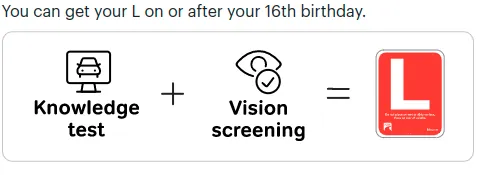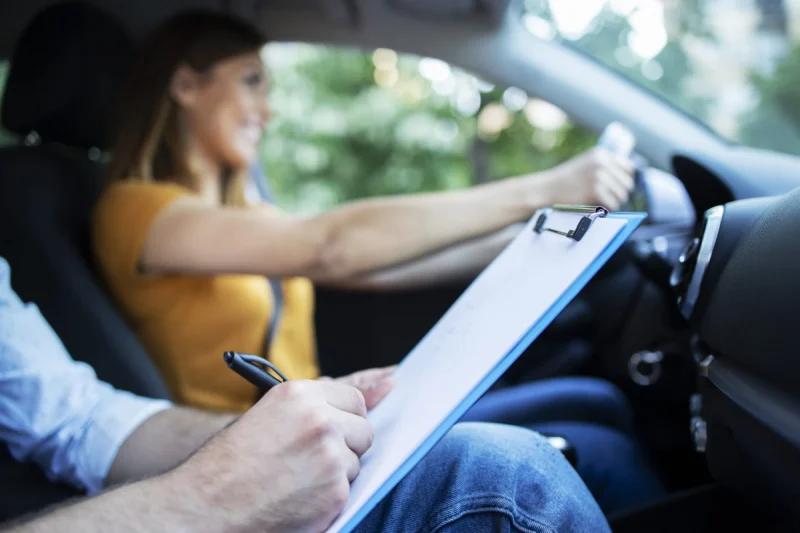
The Province of British Columbia has a population of 5 million, of which 3.65 million hold a driver’s license. It can be shown that a driver’s license is necessary and essential for those living in B.C. A driving test is one of the first things newcomers do when they arrive.
Why is getting a driver’s license still so important when public transportation in B.C. is well developed and accessible? The answer is to save travel time!
For example, it takes about one hour and half to get from YVR Airport to our Burnaby campus by Skytrain, but only 30 minutes if you drive. Also, Canadians like to go out for short trips on weekends or holidays. If you have kids and a lot of luggage, driving can definitely bring more convenience to your trip.
This article will explain two methods of getting a B.C. driver’s license. In addition, the different driving requirements as a Learner (Class 7L), Novice (Class 7) and Full Privilege Driver License (Class 5) will be explained.
Table of Contents
Method 1: Switch Your Valid Foreign Driver's License to a B.C. Driver's License
Basically, after you move to B.C., you have 90 days to switch your valid license to a B.C. driver’s license.
The Insurance Corporation of British Columbia (ICBC) is a provincial Crown corporation that provides insurance in British Columbia and is responsible for all driver licenses, insurance and car accident compensation in British Columbia.

Before you go ahead to apply for a B.C. driver’s license at an ICBC driver licensing office, make sure you have 2 pieces of IDs, your current driver’s license, and proof of how long you’ve held your full driver’s license. Click here for more detailed requirements.
Method 2: Pass the Graduated Licensing Program (GLP)

You will need to pass the Graduated Licensing Program (GLP) if you are a new driver with no previous driving experience. You need to pass three tests: one multiple-choice test and two road tests.
Learner’s License: First Step of Getting a Full B.C. Driver's License

Basically you can get your learner’s license, which is your L, after taking the knowledge test (multiple-choice test) and also the vision screening test. You will get a red magnetic L sign, which should always be displayed on the back of the vehicle that you are driving. Additionally, supervisors over the age of 25 with a valid Class 1, 2, 3, 4 or 5 license must sit in the front passenger seat next to you when you drive. And you can only carry 1 passenger other than the supervisor.
Detailed Restrictions on Learner’s License (L)
- Supervisor age 25+ with a valid Class 1, 2, 3, 4 or 5 license. He or she must sit beside you in the front passenger seat;
- Display L sign on the back of your vehicle;
- Zero alcohol or drugs in your blood when you drive;
- Limit of 1 passenger in addition to supervisor;
- No hand-held or hands-free cellphones or other electronic devices;
- No driving between midnight and 5am;
- You are not allowed to use any electronic devices while driving except to make an emergency call to 911.
This learner’s license will stay valid for 2 years. You should practice driving as a learner during these 2 years and then take your first road test to get to the next level.

Novice (N): Second Step of Getting a Full B.C. Driver's License

The next level, your N (Novice), can be obtained after you pass your first road test. In any case, you should have an L license (learner) for at least 12 months without any driving prohibition.
The first road test, which is the Class 7 road test, takes approximately 45 minutes. The examiner will take you on a route to test your driving skills. After passing your first road test, you can replace the red L sign with a green magnetic N sign. Same as the L sign, it must be displayed on the back of the vehicle while you are driving. At this stage, if you are only carrying 1 passenger, you no longer need a supervisor sitting next to you.
Click here for more information on booking a road test.
Detailed Restrictions on Novice (L)
- Zero alcohol or drugs in your blood when you drive;
- Display N sign on the back of your vehicle;
- No hand-held or hands-free electronic devices
- 1 passenger only (immediate family exempt) unless with supervisor age 25+ with a valid Class 1, 2, 3, 4 or 5 license;
- you are not allowed to use any electronic devices while driving except to make an emergency call to 911.
Once you get your N, you’ll be able to move on to the final step of your graduation license… FULL LICENSE!

However, the Class 5 road test can only be taken if you have held a novice driver’s license for 24 consecutive months and are not prohibited from driving.
Retest Waiting Period
However, if you unfortunately fail your driving test on your first attempt, you can retake the test. (Retakes are NOT free. You will have to pay the road test fee again.)
If you do not pass your knowledge test, you can retake it after 7 days.
If you do not pass any of the road tests,
- You can take the test again after 14 days.
- If you take the test a second time and you don’t pass, you can try again after 30 days.
- If after three or more tries you don’t pass, you can take the test again after 60 days.
Click here to check out ICBC’s top tips for passing your road test.
More Informations on Exchanging Driver’s License in Different Provinces in Canada
The driver’s license system is similar in different provinces, but the documentation requirements or steps to obtain a full driver’s license may vary. You can refer to the following official website.
Contact us if you have more questions about studying in Canada.

